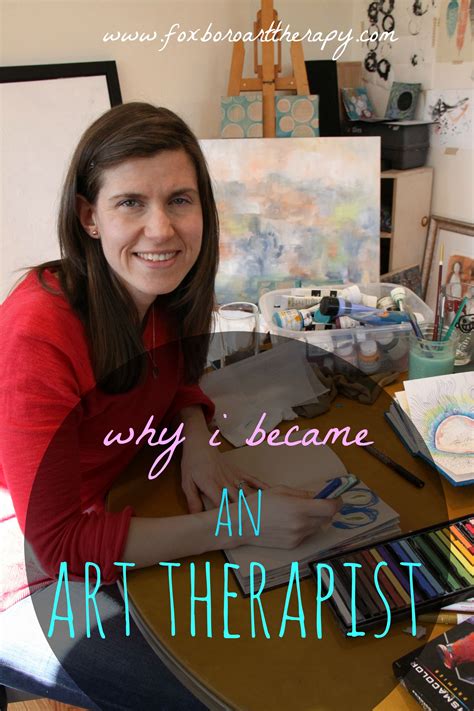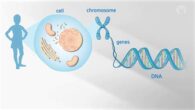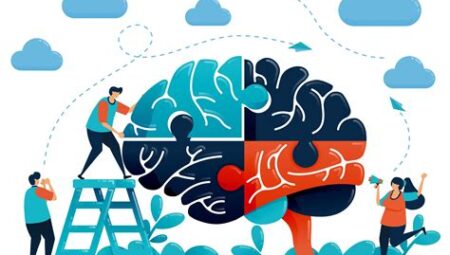Art therapy is a powerful form of therapy that utilizes the creative process of making art to improve and enhance the physical, mental, and emotional well-being of individuals of all ages and backgrounds. In this blog post, we will take a deep dive into the world of art therapy and explore its fascinating history, benefits, and techniques. From understanding how art therapy helps in self-expression and emotional release to exploring the connection between art and the subconscious mind, we will uncover the transformative potential of this therapeutic practice.
We will also take a closer look at a case study, The Mind Artist, to see firsthand how art therapy can bring about positive change in individuals facing various mental health challenges. Additionally, we will discuss the integration of art therapy into traditional therapy practices and provide insights on how to pursue a career in this rewarding field. Join us on this journey into the world of art therapy, where creativity becomes a powerful tool for healing and self-discovery.
Table of Contents
Understanding art therapy and its benefits
Art therapy is a form of psychotherapy that uses artistic mediums as a means of communication and expression. It can be an effective tool for individuals who may have difficulty expressing themselves verbally, such as children, trauma survivors, or those with mental health issues.
One of the key benefits of art therapy is its ability to tap into the subconscious mind, allowing for the exploration of emotions and inner thoughts that may be difficult to access through traditional talk therapy alone. This can lead to a greater sense of self-awareness and can assist in the healing process.
Art therapy can also help individuals to manage stress and anxiety, as the act of creating art can be meditative and calming. Engaging in the creative process can provide a sense of control and empowerment, and help individuals to process and release difficult emotions.
Overall, art therapy offers a unique and effective way for individuals to explore and address emotional and psychological challenges, while also promoting personal growth and self-discovery.
Exploring the history of art therapy
Art therapy has a long and rich history, dating back to the early 20th century. It was first recognized as a form of therapy in the 1940s and 1950s when many mental health professionals began to see the therapeutic benefits of art-making. However, the use of art as a healing tool can be traced back much further, to ancient civilizations where art was used to heal the body and mind.
In the late 1800s, psychiatrists began to recognize the importance of artistic expression in the treatment of mental illness. This led to the development of art therapy as a formal discipline. The first art therapy class in the United States was offered in 1967 at the School of the Art Institute of Chicago.
Over the years, art therapy has continued to evolve, with research supporting its effectiveness in treating a wide range of mental health issues. Today, art therapy is used in hospitals, schools, and community settings, and is recognized as a valuable tool for promoting emotional, psychological, and physical well-being.
Understanding the history of art therapy can provide valuable insight into the development of this discipline and the ways in which it has been used to promote healing and self-expression throughout history.
The role of creativity in healing the mind
Art therapy has long been recognized as a powerful tool for promoting mental wellness and healing the mind. One of the key factors in the effectiveness of art therapy is the role of creativity. Creativity allows individuals to express themselves in ways that words alone cannot, tapping into emotions, thoughts, and experiences that may be difficult to articulate.
Through creative expression, individuals can explore and confront their innermost feelings, fears, and traumas. The act of creating art can be a cathartic experience, providing a release for pent-up emotions and allowing for the processing and acceptance of difficult experiences. This process can be incredibly healing for the mind, offering a sense of relief and a newfound perspective on one’s struggles.
Moreover, engaging in creative activities can stimulate the brain in unique ways, leading to an increase in positive emotions and a reduction in stress and anxiety. The act of creating art can be an immersive, meditative experience, allowing individuals to enter a state of flow where worries and negative thoughts are pushed aside, and a sense of calm and focus is achieved.
By integrating creativity into therapy practices, art therapy offers a holistic approach to healing the mind, addressing both emotional and cognitive aspects of mental well-being. Through creative expression, individuals can gain insights into their inner world, find new ways of coping with challenges, and ultimately, embark on a journey of self-discovery and healing.
How art therapy helps in self-expression
Art therapy is a powerful form of therapy that allows individuals to express themselves in a non-verbal way, using artistic forms such as painting, drawing, and sculpture as a means of communication. It provides a safe space for individuals to explore and process their emotions, thoughts, and experiences without having to rely solely on words.
Through the process of creating artwork, individuals can tap into their inner emotions and communicate feelings that may be difficult to express verbally. This process allows individuals to access and express their true selves, leading to a greater sense of self-awareness and self-expression.
Art therapy offers a unique opportunity for individuals to explore their inner world and give voice to their experiences through visual expression. This non-verbal form of communication transcends language barriers and cultural differences, allowing individuals to express themselves in a universal language that is both personal and relatable.
Overall, art therapy provides a safe and supportive environment for individuals to connect with their inner creativity, explore their emotions, and express themselves in a meaningful and authentic way, ultimately leading to greater self-awareness and personal growth.
Using art therapy as a tool for emotional release
Art therapy is a powerful tool for emotional release, providing a safe and non-verbal way to express and process difficult emotions. Through the use of artistic mediums such as painting, drawing, and sculpting, individuals are able to tap into their subconscious and release pent-up emotions in a creative and therapeutic way.
Many people find it challenging to express their emotions verbally, and this is where art therapy can be incredibly beneficial. By engaging in creative activities, individuals are able to access and explore their emotions in a non-threatening and self-guided manner, allowing for a deeper level of emotional release and insight.
Art therapy also offers a unique opportunity to externalize and transform emotional pain, giving individuals the freedom to explore their emotions without feeling overwhelmed or burdened by them. This can lead to a greater sense of relief and empowerment, as individuals are able to visually express and release their emotions in a tangible and cathartic way.
Overall, art therapy provides a valuable outlet for emotional expression and release, allowing individuals to process and cope with their emotions in a creative and healing way. It can be an effective tool for anyone seeking to better understand and navigate their emotions, providing a safe and supportive environment for emotional exploration and release.
Art therapy techniques for managing stress and anxiety
Art therapy is a powerful tool for managing stress and anxiety, offering individuals a creative way to explore and express their emotions.
One technique commonly used in art therapy for stress and anxiety is guided imagery. This involves the client visualizing a calming and peaceful place while creating art, helping to reduce feelings of stress and promote relaxation.
Mandala coloring is another effective art therapy technique for managing stress and anxiety. The repetitive and meditative nature of coloring mandalas can help to quiet the mind and promote a sense of inner peace.
In addition, collage therapy can be beneficial for those experiencing stress and anxiety, as it allows individuals to express their feelings and experiences through the arrangement of images and words in a visually creative way.
Exploring the connection between art and the subconscious mind
Art has long been recognized as a powerful tool for delving into the subconscious mind. The act of creating art allows individuals to tap into their inner thoughts, emotions, and beliefs, often revealing insights that may not be easily accessible through conscious thought alone.
Through art therapy, individuals are able to explore the deeper layers of their mind, and gain a better understanding of their subconscious processes. This can be especially beneficial for those dealing with trauma, as it provides a safe and supportive environment for processing and expressing difficult emotions.
By engaging in artistic activities such as drawing, painting, and sculpting, individuals can access and externalize their innermost thoughts and feelings, leading to greater self-awareness and emotional healing.
Overall, the connection between art and the subconscious mind is a fascinating and essential aspect of art therapy, offering individuals the opportunity to explore and understand themselves in a profound and transformative way.
The Mind Artist: A case study in art therapy
Art therapy is a powerful and effective form of psychotherapy that utilizes the creative process to improve mental health and well-being. One intriguing case study in art therapy is the story of a patient who became known as the Mind Artist. This individual struggled with severe anxiety and depression, and traditional talk therapy was not yielding the desired results. However, when the patient began to engage in art therapy, amazing breakthroughs were witnessed.
The Mind Artist found solace and a means of expression through various artistic mediums such as painting, sculpting, and collage. The act of creation allowed the patient to tap into subconscious thoughts and emotions that were difficult to access through verbal communication alone. Through the guidance of an art therapist, the individual was able to explore and process deep-rooted issues, leading to a significant improvement in mental well-being.
This case study serves as a compelling example of how art therapy can provide a unique and transformative healing experience. It demonstrates the profound impact that creative expression can have on mental health, offering a valuable alternative to traditional psychotherapy. The Mind Artist highlights the potential for individuals to uncover and address their innermost struggles through the use of art, ultimately leading to a journey of self-discovery and healing.
As we continue to explore the efficacy of art therapy, the case of the Mind Artist exemplifies the profound connection between creativity and mental wellness. It serves as a testament to the transformative power of art therapy, providing hope and inspiration for individuals seeking alternative forms of therapy for mental health challenges.
Integrating art therapy into traditional therapy practices
Art therapy is a powerful and effective form of therapy that utilizes the creative process to improve and enhance the physical, mental, and emotional well-being of individuals of all ages. By integrating art therapy into traditional therapy practices, therapists can effectively tap into the creative expression of their patients to help them overcome emotional and psychological challenges.
Integrating art therapy into traditional therapy practices allows for a more holistic approach to healing, as it incorporates both verbal and nonverbal forms of communication. Through the use of various art materials and techniques, therapists can encourage their patients to express themselves in ways that may be difficult to convey through traditional talk therapy alone.
One of the key benefits of integrating art therapy into traditional therapy practices is the ability to help individuals access and process their unconscious thoughts and emotions. Through the use of creative activities such as drawing, painting, and sculpting, therapists can help their patients access and explore deeper, more meaningful aspects of their inner world.
Additionally, integrating art therapy into traditional therapy practices can help to foster a sense of empowerment and control over one’s emotions. Engaging in the creative process allows individuals to take ownership of their healing journey and gain a greater sense of self-awareness and self-expression.
How to become an art therapy practitioner
Art therapy is a growing field that offers a unique approach to improving mental health and well-being. If you are passionate about using art as a form of therapy and are interested in pursuing a career in this rewarding field, there are several steps you can take to become an art therapy practitioner.
Firstly, it’s important to obtain a bachelor’s degree in a related field such as psychology, counseling, or art therapy. This will provide you with a strong foundation in the principles and theories of art therapy, as well as essential knowledge of human behavior and mental health.
After completing your undergraduate degree, you will need to pursue a master’s degree in art therapy from an accredited program. This will give you the specialized training and clinical experience necessary to become a licensed art therapist. During your graduate studies, you will gain hands-on experience working with clients and learn how to use art as a therapeutic tool to address a wide range of emotional and psychological issues.
Once you have completed your education and clinical training, you can become a registered art therapist by obtaining the required credentials from the Art Therapy Credentials Board (ATCB). This will allow you to practice as a professional art therapist, working with individuals of all ages in various settings such as hospitals, schools, mental health clinics, and private practice.






